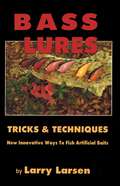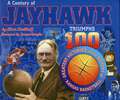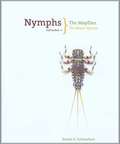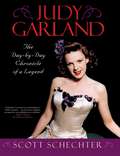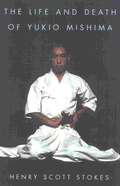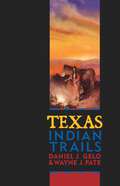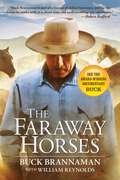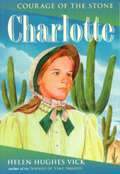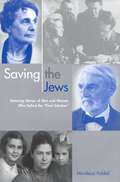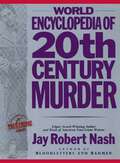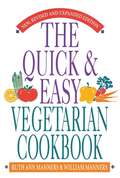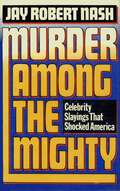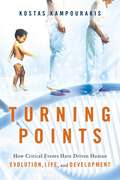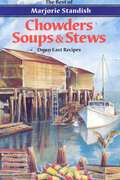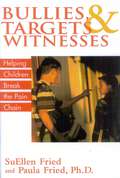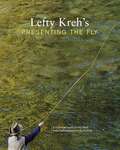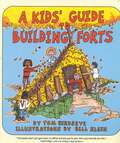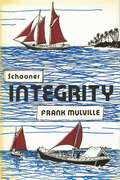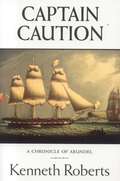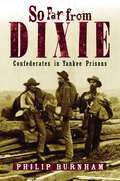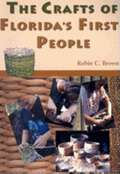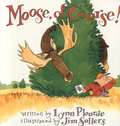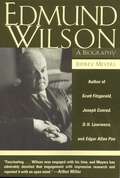- Table View
- List View
Bass Lures Trick and Techniques
by Larry LarsenModifications of lures and development of new baits and techniques continue to keep the fare fish, and that's important. Bass seem to become "accustomed" to the same artificials and presentations seen over and over again. As a result, they become harder to catch. It's the new approach that again sparks the interest on the largemouth. To that end, this book explores some of the latest ideas for modifying; rigging and using bass lures. All are highly effective when utilized in the correct environment and conditions. The book details productive trick modifications and tactics that any novice or professional angler can apply to catch more bass with artificial lures.
A Century of Jayhawk Triumphs: The 100 Greatest Victories in the History of Kansas Basketball
by Blair KerkhoffBasketball wasn't invented at Kansas but basketball tradition was. It's where James Naismith taught, Phog Allen coached, Wilt Chamberlain dominated, Danny Manning performed a miracle and Roy Williams wins like no other coach in the college game. It's been a century of national championships, All-Americans, Olympic heroes and remarkable games. A Century of Jayhawk Triumphs relives the top 100 victories in the program's storied history.
The Testosterone Syndrome: The Critical Factor for Energy, Health, and Sexuality—Reversing the Male Menopause
by William Fryer Eugene ShippenTestosterone therapy can improve the overall health and feeling of well-being of aging men, improving sex drive, mental functions, and energy levels and reducing the risk of cardiovascular disease.—Library Journal
Nymphs, The Mayflies: The Major Species
by Ernest SchwiebertVolume IFor the fly fisher seeking to catch more and bigger trout, fishing nymphs--patterns that mimic the larval stage of mayflies--can be a surefire approach. Nymphs: The Mayflies, the first volume in a totally revised edition of the 1973 original, is the singular authority on identifying the myriad species of mayfly larvae and tying imitations that will attract trout all across the country. Author Ernest G. Schwiebert spent the last fifty years of his life traveling, fishing, and gathering information on scores of mayfly species across the country. The 1973 edition of Nymphs set forth his initial findings. Now in this wholly revised and expanded form, Schwiebert's last work offers the reader exacting details of every major mayfly species for the sake of identification, along with recipes for dozens of fly patterns to imitate them.This new edition also contains numerous stories and anecdotes from Schwiebert's travels, some never set down in writing before, that further add to the understanding of how to choose, cast, and fish nymphs, and life.
Judy Garland: The Day-by-Day Chronicle of a Legend
by Scott SchechterThis day-by-day account of the legend's life—the first of its kind—succeeds in the daunting task of tracking Judy's myriad professional pursuits, the personal crises she triumphed over, and her many accomplishments.Lavishly illustrated with eighty rare photos, this volume contains new information to enthrall even the most knowledgeable Garland fan. For those just encountering Judy, this book provides the perfect introduction, an engrossing narrative bursting with information: her performance dates, concert set lists, and recording session schedules; the evolving critical reception to her work; the many celebrities that came into contact with and adored Judy, from the Beatles to Elvis to Sinatra; her filming itineraries and guest appearances; excerpts from rare interviews and press conferences; and much more.Here is Judy Garland as never viewed before, in a way that allows readers to see her whole life on a daily basis and come to their own conclusion about what her life was really about. They will encounter a survivor, parent, friend, and one of the greatest entertainers the world has ever known, who overcame one obstacle after another in order to devote forty-five of her forty-seven years to delighting her fans. From her debut performance as a Gumm Sister at age two to her final day, Judy Garland is the definitive chronicle of this remarkable icon.
The Life and Death of Yukio Mishima
by Henry Scott StokesNovelist, playwright, film actor, martial artist, and political commentator, Yukio Mishima (1925-1970) was arguably the most famous person in Japan at the time of his death. Henry Scott Stokes, one of Mishima's closest friends, was the only non-Japanese allowed to attend the trial of the men involved in Mishima's spectacular suicide. In this insightful and empathetic look at the writer, Stokes guides the reader through the milestones of Mishima's meteoric and eclectic career and delves into the artist's major works and themes. This biography skillfully and compassionately illuminates the achievements and disquieting ideas of a brilliant and deeply troubled man, an artist of whom Nobel Laureate Yasunari Kawabata had said, "A writer of Mishima's caliber comes along only once every two or three hundred years."
Texas Indian Trails
by Daniel J. GeloConnect the past with the present in Texas Indian Trails and appreciated this state's rich heritage by visiting the landmarks and campsites used by the Indians of Texas. This guidebook allows Texas natives and visitors to experience the Texas landscape as the Indians once knew it. Through local history and folklore, Texans will grow a new appreciation for their rich heritage, and visitors can learn to know Texas as the natives do.
Faraway Horses: The Adventures and Wisdom of One of America's Most Renowned Horsemen
by Buck Brannaman"I've started horses since I was 12 years old and have been bit, kicked, bucked off and run over. I've tried every physical means to contain my horse in an effort to keep from getting myself killed. I started to realize that things would come much easier for me once I learned why a horse does what he does. This method works well for me because of the kinship that develops between horse and rider. " --Buck BrannamanIn THE FARAWAY HORSES, Brannaman shares his methods for training and provides a behind-the-scenes glimpse of Robert Redford's movie The Horse Whisperer, for which he was the technical advisor. *Authoratative figure in horsemanship*Reveals the key to understanding animalsBUCK BRANNAMAN is a horse gentler--not a horse "breaker"--who has started more than 10,000 young horses in his clinics. He lives with his family in Sheridan, Wyoming. WILLIAM REYNOLDS is the associate publisher of Cowboys & Indians magazine. He lives with his family in Santa Ynez, California.
Charlotte
by Helen Hughes VickThe exciting second novel in the Courage of the Stone series takes place in 1868 as Charlotte and her family leave Massachusetts for the Arizona Territory. Ages 9-12.
Saving the Jews: Men and Women who Defied the Final Solution
by Mordecai PaldielDuring the Holocaust's long nights there were gentiles in every corner of Europe who saved Jews. This is their story.
World Encyclopedia of 20th Century Murder
by Jay Robert NashThe twentieth century has witnessed an unprecedented explosion of violent murder that has affected levels of society throughout the world and transformed what was once a distant threat into a constant reality, lurking around the corner, living down the block making everyone vulnerable to the unthinkable. World Encyclopedia of 20th Century Murder, an alphabetical excursion through the most celebrated and historically important murder cases in this century, seeks to explain the reasons behind these shocking and celebrated killings. More than just a staggering chronicle of chilling events, this remarkable book by Edgar Award-winning author Jay Nash, is the definitive reference to modern worldwide murder.The over one thousand entries and over four hundred illustrations found in this volume represent all manner of slayers and all types of homicides, with varying degrees of motivation and a grim diversity of methods. From the lone, sensational jealousy murders by Walter A. Kurtz and Jean Harris to the perverse slayings by British sex murderer John Christie, serial killer Ted Bundy, and fanatical religious mass murderer Jim Jones in Guyana, each case represents a unique and fascinating story. For each entry, an in-depth portrait of the killer is provided, including their childhood history, work and marital experience, and social history. The entries then graphically follow each case from the flowering of the killer's motivation, the circumstances of the actual murders, the drama of the police investigation and trial, to the nature of the inevitable incarceration or execution.The cases select for this work encompass the most important and sensational murders of our time. By dint of sheer numbers, all mass murderers and serial killers of note have been included—Albert DeSalvo (the so-called Boston Strangler), John Wayne Gacy, Juan Corona, and the dangerously prolific Henry Lucas, among others. Scores of renowned and spectacularly horrific cases are offered, such as misogynistic murderer Coral Eugene Watts, who killed forty women simply because he felt that women were evil; the cannibal killers Albert Fish, Ed Gein, and Fritz Haarmann; Belle Guiness of Indiana, who advertised in lonely hearts columns for suitors and then murdered them by the dozens; Jack Henry Abbott, a jailed murderer whose literary talents brought him to freedom, acclaim, and then more murder in New York City; and Harry Thaw, the arrogant and demented millionaire who shot a man dead in front of hundreds of spectators. Also included are cases of teenagers and even children who murdered with motives as petty as losing a game or suffering a verbal insult.In addition to being a vital and informative historical and sociological reference work, World Encyclopedia of 20th Century Murder will provide gripping reading for anyone interested in true crime, law, law enforcement, and penology. More than that, it provides insight into a social problem that has spread to almost epidemic proportions around the world. Rather than viewing these men and women as strangers from distant lands and social pariahs, this book presents them as the real and present danger they are.
The Quick and Easy Vegetarian Cookbook
by William Manners Ruth Ann MannersVegetarian cooking is fast, easy, and foolproof. In this revised, expanded, and updated version of the best-selling Quick &EasyVegetarian Cookbook Ruth Ann and William Manners add international gourmet fare and flavor to theior quick and easy classic collection. Once again, preparation time is pared to the bone. In less than an hour you can make: 5-minute vegetable tortillas, 10-minute tomato rice soup, 12-minute chili corn pie and 20-minute pizza.Over 200 recipes from appetizers to desserts—all of them low-calorie, enticing, and bursting with nutritional value—feature fresh fruits and vegetables while avoiding refined ingredients. A real find for those who like to eat well every night of the week without spending a lot of time on food preparation.
Murder Among the Mighty: Celebrity Sightings That Shocked America
by Jay Robert NashIn this riveting book of celebrity murders Jay Robert Nash provides keen insights into the mind of the murderer, and has carefully researched each murder to bring new facts to light. He devotes a chapter to each celebrity murder spanning from the slaying of Big Jim Fisk in 1872 up through the poisoning of Sunny Von Bulow in 1982. This is a fascinating account of how the other side lives...and kills.
Turning Points: How Critical Events Have Driven Human Evolution, Life, and Development
by Kostas KampourakisAn accessible introduction to core concepts in evolution for lay readers, which shows that random events have played a critical role in the development of lifeCritical historical events--or "turning points"--have shaped evolution and continue to have a decisive effect on individual lives. This theme is explored and explained in this lucid, accessible book for lay readers. The author argues that, although evolution is the result of unpredictable events, these events have profound influences on subsequent developments. Life is thus a continuous interplay between unforeseeable events and their decisive consequences.As one example, the author cites the fusing of two chromosomes, which differentiated the human species from our closest animal relatives about 4 to 5 million years ago. This event was not predictable, but it had a profound effect on the evolution of our species thereafter. By the same token, certain unpredictable circumstances in the past enabled only Homo sapiens to survive to the present day, though we now know that other human-like species also once existed.The author contrasts such scientific concepts grounded in solid evidence with prevalent misconceptions about life: specifically, the religious notion that there is a plan and purpose behind life, the widespread perception that intelligent design governs the workings of nature, the persistent belief in destiny and fate, and the attribution of an overly deterministic role to genes.This excellent introduction for laypersons to core ideas in biology goes a long way toward dispelling such misconceptions and presents current scientific research in clearly understandable, jargon-free terms.
Chowders, Soups, and Stews
by Marjorie StandishThe best recipes from Maine's acclaimed food writer, these are mouth-watering renditions of classics like clam chowder, lobster stew as well as broccoli chowder and crabmeat stew. Simple and simply delicious!
Don't Call the Thrift Shop: What to Do With a Lifetime of Well-Loved Possessions
by Susannah RyderWhen it's time for a move to a retirement home, a smaller home, or there's a death in the family, how should you manage a lifetime of family heirlooms and cherished possessions? Should that old chest go to the rummage sale, or is it a rare antique? What about jewelry, coins, stamp collections, china, silver, glass, memorabilia, baseball cards and toys? Are they valuable? How can we tell? Who will buy them? What are they really worth?This book is your key to finding the value of everything from diamonds to Teddy Bears, as well as tips about estate planning and appraisals. Find out all about:*the hottest collectibles markets and why some items skyrocket in price*how experts spot a valuable antique*where to get information used by professionals*selling at auctions, estate sales, and on eBay
Bullies, Targets, and Witnesses: Helping Children Break the Pain Chain
by SuEllen Fried Paula FriedIn this timely and thought provoking book, the authors explore the effects of bullying on children and provide suggestions to end the cycle of child-to-child violence. Filled with personal stories from children and packed with practical ideas for parents, teachers and students.
Lefty Kreh's Presenting the Fly: A Practical Guide To The Most Important Element Of Fly Fishing
by Lefty KrehLefty Kreh&’s Presenting the Flydetails the most essential analysis in fly-fishing: how to get the right fly to the right fish, in the right way, at the right time. This vastly comprehensive, large-format volume explains the ways that shape, color, and weight of the fly can determine success under varying conditions.
A Kids' Guide to Building Forts
by Tom BirdseyeAn entertaining guide for building safe and fun forts—outside, inside, at the beach, and in snow country.Ages 8-14
Schooner Integrity
by Frank MulvilleThe Integrity was one of the best known American sailing craft of the 1960s; built ina famous boatyard in Dartmouth, New England, not far from where Slocum built the Spray, she was the dream boat of her owner, Waldo Howland. She cruised the West Indies and crossed the Atlantic to visit Ireland and the English south coast. Then she was sold and there began a chain of events which led to adventure, chicanery and eventually tragedy. Abandoned by a scratch crew in a gale, drifting dismasted round the ocean, boarded and stripped; taken in tow by a Fleetwood trawler and sailed into Turks Island: the subject of an endless legal battle for salvage: mysteriously sunk at her moorings on the day she was to be auctioned: refloated and sold--a leaking hulk swinging to her mooring.It was here that Frank Mulville came on her and with his small yacht Iskra offered to tow her to Cat Island, further up the Bahamas chain. The only man able to tell the story of her last voyage, Frank was to meet Waldo and also members of the crew who abandoned her; he has pieced together the whole story and given a first-hand account of its climax.
Captain Caution
by Kenneth RobertsIn this conclusion to the Chronicles of Arundel, the year is 1812 and America has declared war on Britain. The American ship Olive Branch is waylaid by a British cruiser. In the ensuing fight, Captain Dorman is killed and his crew is taken prisoner, including the captain's pretty and strong-willed daughter, Corunna. With his keen eye to detail Roberts weaves a colorful tale of swashbuckling and sea battles. He portrays the bravery of American and French seamen, their sufferings at the hands ot the British the invention of the Gangway Pedulum, and the sailor's dangerous and dramatic escape from the prison hulks.
So Far from Dixie: Confederates in Yankee Prisons
by Philip BurnhamAcross the North, 26,000 Rebels died in what was called "Yankee captivity"—six times the number of Confederate dead listed for the battle of Gettysburg, and twice that for the Southern dead of Antietam, Chickamauga, Chancellorsville, Seven Days, Shiloh, and Second Manassas combined. "If there was ever a hell on earth," one Confederate veteran remembered, "Elmira prison was that hell." New York's POW camp—nicknamed "Helmira"—was the most infamous of Northern prisons during the Civil War, places where hunger, brutality, and disease were everyday hazards.So Far from Dixie is the gripping narrative history of five men who were sent to Elmira and survived to document their stories. Berry Benson promised that he would escape the prison under honorable circumstances. Anthony Keiley charmed Union authorities into giving him a job at Elmira and later became mayor of Richmond, Virginia. John King refused to build coffins for his fellow prisoners. Marcus Toney disdained to take the Union oath of loyalty until long after the war had ended. And Frank Wilkenson, a Union army volunteer only fifteen years old, endured the same humiliating punishments meted out to the prisoners he was guarding.
Crafts of Florida's First People
by Robin C. BrownThere were people living all over Florida for twelve thousand years before Columbus got here. Before hardware stores and shopping malls, these people managed to get food, make clothing, and cook their meals. In The Crafts of Florida's First People, Robin Brown asks, How did they do it? And to answer his question, he actually learns to do things the way they did. Using materials that you can find in Florida today, you can learn with him how to throw spears and darts, make pottery, weave cloth, mix paint, build traps, and even how to start a fire without matches—just the way Florida's first people did it for thousands of years. Each chapter has easy-to-follow, fully illustrated directions. Even if you dont have the natural supplies available in your area, the book includes suggestions for alternative materials so you can still learn their crafts. As you work, you will experience some of the daily life of the ancient peoples of Florida. You will find out not only how to make a spear, but what its construction tells us about how the first people hunted and what animals they ate. The last true Florida native died 200 years ago, but you can help keep their culture alive.
Moose, Of Course!
by Lynn PlourdeA persistent young boy tries everything he can think of to attract a moose, but it isn't until he is forced to do nuthin that he is successful.
Edmund Wilson: A Biography
by Jeffrey MeyersThis comprehensive biography of prolific critic, essayist, historian, and novelist Edmund Wilson (1895-1972) posits, quite successfully, that the subject lived a life as romantic and chaotic as his friend F. Scott Fitzgerald's. Wilson suffered a nervous breakdown and the tragic death of his second wife (he was married four times, among them, Mary McCarthy); had affairs with numerous beautiful women, including Edna St. Vincent Millay; and was friend to literary giants such as John Dos Passos, Vladimir Nabakov, and W.H. Auden.
